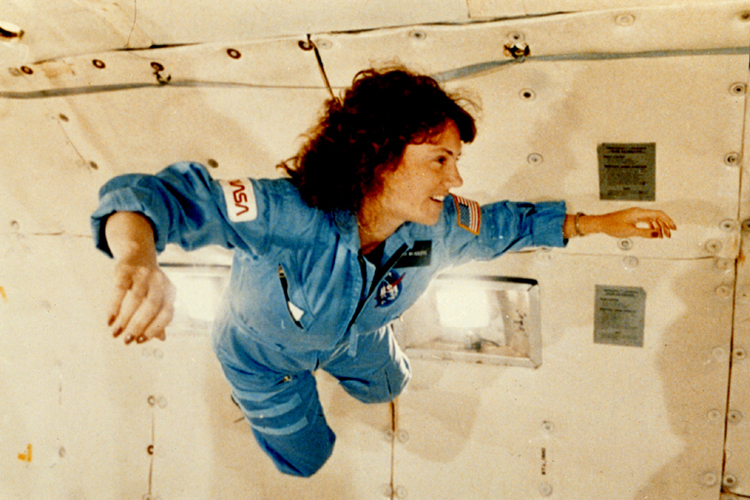What Is the Vomit Comet?

The "Vomit Comet" refers to a NASA program that introduces astronauts to the feeling of zero-gravity spaceflight.
Recruits climb aboard a specially fitted aircraft that dips and climbs through the air to simulate the feeling of weightlessness in 20- to 25-second intervals.
The downside? The sudden changes make a lot of astronauts feel ill. Very, very ill. Hence the tongue-in-cheek name.
According to NASA, its "reduced gravity" research program started in 1959. NASA has flown several types of aircraft over the years, perhaps most famously the KC-135A aircraft that is now retired.
The agency currently offers flight opportunities on the Boeing 727-200F operated by Zero G Corp.
A typical flight will see two to three hours of plunging arcs, giving astronauts about 30 or 40 chances to experience weightlessness when the airplane drops to a lower altitude. Some researchers also use the flights as a chance to run experiments in weightlessness.
The program is a good platform for students in particular, as the costs for these flights are far lower than flying an experiment on a space mission.
Sign up for the Live Science daily newsletter now
Get the world’s most fascinating discoveries delivered straight to your inbox.
The actors of the movie "Apollo 13" — Tom Hanks, Kevin Bacon and Bill Paxton — were probably the most famous visitors on the KC-135A parabola flights in the 1990s.
Set designers created a spacecraft interior adapted to the inside of the airplane, then the cameras captured shots on film — in less than 30 seconds of acting at a time. Director Ron Howard leased the aircraft over six months to achieve the weightless shots viewers see in the film.
If you're itching for a parabola flight yourself, Zero G Corp. also offers opportunities for tourists to take a ride. Be prepared to save for a while, though: Tickets are more than $5,000 a person.
Follow LiveScience on Twitter @livescience. We're also on Facebook & Google+.

Elizabeth Howell was staff reporter at Space.com between 2022 and 2024 and a regular contributor to Live Science and Space.com between 2012 and 2022. Elizabeth's reporting includes multiple exclusives with the White House, speaking several times with the International Space Station, witnessing five human spaceflight launches on two continents, flying parabolic, working inside a spacesuit, and participating in a simulated Mars mission. Her latest book, "Why Am I Taller?" (ECW Press, 2022) is co-written with astronaut Dave Williams.









